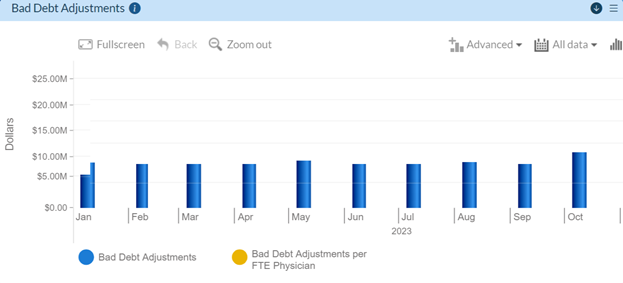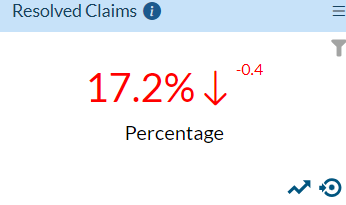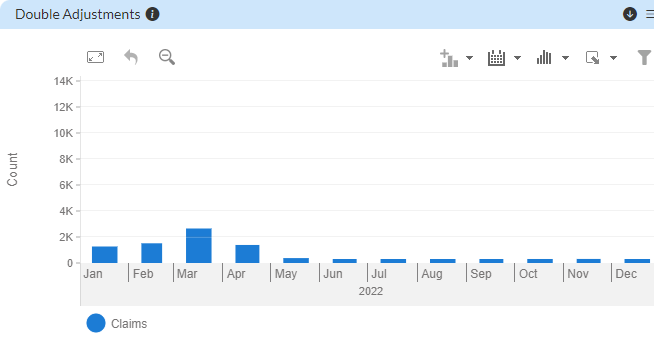
by Carrie Bauman
Monitoring write-offs is a crucial process for healthcare organizations. It provides insight into various financial operations, helping you track adjustments, unpaid claims, bad debts, and charity care. As a healthcare provider, staying on top of these metrics not only improves your revenue cycle but also enhances transparency and operational efficiency.
In this blog, we’ll explore why monitoring write-offs in medical billing is essential for your organization, how the WhiteSpace Health platform can streamline this process, and the key performance indicators (KPIs) you should focus on. We’ll also delve into the importance of tracking bad debts and claim adjustments, and offer insight into how write-off monitoring impacts your organization’s financial health.
Write-offs in medical billing refer to the portion of claims that are not collectible from patients or insurance companies and are therefore removed from your accounts receivable. This includes both bad debts and charity care, along with claim adjustments due to payer policies. Monitoring these write-offs in medical billing is essential for several reasons:
Write-offs represent potential revenue loss. By monitoring them closely, you can better understand where your revenue gaps are occurring and take action to reduce them.
By keeping an eye on your write off percentage, you can ensure that your collections are efficient and that claims are being processed properly. This leads to a more consistent cash flow.
Monitoring your healthcare claim write off rate helps identify bottlenecks in your revenue cycle, allowing you to optimize staff productivity, billing accuracy, and claim follow-up processes.
Knowing your write off percentage benchmark allows you to compare your performance with other healthcare organizations and ensure you are not losing more revenue than the industry average.
By tracking your write-offs in medical billing, you gain actionable insight that helps you mitigate potential revenue loss and optimize the claims process.

The WhiteSpace Health platform offers comprehensive tools to help you monitor, analyze, and manage write-offs in medical billing effectively. This includes tracking write off percentage, bad debts, charity care, and claim adjustments. Here are some key uses of monitoring write-offs with the WhiteSpace Health platform:
You can track write off percentage in real-time, enabling you to spot trends quickly and address them before they cause significant revenue leakage.
With powerful analytics capabilities, the platform allows you to break down your healthcare claim write off by payer, service type, or location, making it easier to identify where losses are happening.
By comparing your write off percentage with industry write off percentage benchmarks, you can determine if your organization is performing within acceptable limits or if corrective actions are needed.
WhiteSpace Health lets you categorize write-offs in medical billing into different types, such as bad debts and charity care, providing you with a clearer picture of your financial standing.
The platform helps automate the monitoring and processing of claim adjustments, so you can minimize human error and ensure that claims are resolved efficiently.
Tracking the right KPIs is essential for effective monitoring of write-offs in medical billing. The WhiteSpace Health platform provides several KPIs that you should focus on:
Monitoring the total amount of write-offs in medical billing is critical for understanding the volume of revenue you are losing. This KPI gives you an overall view of the uncollected amounts, which can include both bad debts and adjustments. By analyzing this data, you can identify specific areas in your billing process that need improvement.
For instance, if your write off percentage exceeds industry benchmarks, this could be a red flag indicating inefficiencies in your claim management process.
Bad debts occur when patients or insurance companies do not pay their share of the claim, and the amount is ultimately written off as uncollectible. Charity care, on the other hand, represents the portion of services that are provided for free to patients in financial need.
Monitoring bad debts and charity care as a KPI helps you track the total financial impact of these write-offs on your organization. According to a survey by the Medical Group Management Association (MGMA), about 18% of healthcare organizations report that bad debts significantly affect their revenue.

By keeping tabs on your bad debts through the WhiteSpace Health platform, you can develop strategies to reduce these write-offs, such as improving patient payment follow-ups or reevaluating your charity care policies.
Tracking write-offs by code is another important KPI. This allows you to see which specific codes or services are being written off more frequently. If a particular service consistently results in high claim adjustments, it may indicate issues with how that service is coded or billed.
Monitoring this KPI enables you to identify trends in your write-offs, helping you implement corrective measures such as coding audits or staff training.

One of the most critical KPIs for your revenue cycle is the percentage of resolved claims. Monitoring the percentage of claims that are resolved (either paid or written off) ensures that your accounts receivable do not spiral out of control.
A low percentage of resolved claims could indicate that your billing process is inefficient, leading to unnecessary write-offs or bad debts. The WhiteSpace Health platform helps you keep this percentage as high as possible by providing actionable insights into which claims are still pending and why they have not been resolved.
Double adjustments occur when the same claim is adjusted multiple times, often due to errors in the billing process. Monitoring this KPI helps you spot inefficiencies in your revenue cycle.

If you see an increase in double adjustments, this could be a sign that your staff needs additional training or that your claim adjustment process needs more oversight. By using the WhiteSpace Health platform to track and reduce double adjustments, you can ensure that your write off percentage remains within acceptable limits.
Monitoring write-offs in medical billing is crucial for maintaining the financial health of your healthcare organization. By tracking your write off percentage, bad debts, claim adjustments, and other key KPIs using the WhiteSpace Health platform, you can gain deeper insights into your revenue cycle, improve cash flow, and align with industry write off percentage benchmarks.
Additionally, the platform’s ability to provide real-time data, break down write-offs by code, and automate adjustments can help you make informed decisions that lead to better operational efficiency and fewer revenue losses. In a competitive healthcare environment, monitoring healthcare claim write offs is more important than ever.
To get started, consider implementing a solution like WhiteSpace Health that simplifies the process, offering you a clear path toward financial stability and operational success.
By addressing these aspects of write-off management, you can reduce revenue loss and maintain a healthier bottom line, ultimately allowing you to focus on providing excellent patient care without being bogged down by financial inefficiencies.

A 30-year veteran in healthcare IT, Carrie Bauman is responsible for marketing, communications and business development strategies that drive brand awareness, growth and value for clients, partners, and investors.

2424 North Federal Highway, Suite 205
Boca Raton, FL 33431